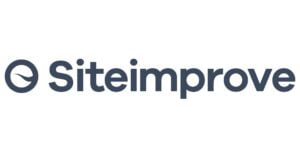A Guide to Google Tag Manager Accessibility 2025
As a business owner, accessibility is not something you can ignore, not when a large percentage of your customers probably have a disability.
In the United States alone, over 60 million adults (1) are living with a disability. And that’s just the United States!
Accessibility is no longer just a physical consideration either – it’s an integral part of doing business online.
If you do most of your marketing online, it’s important to be aware of the legal requirements for website accessibility as well as the basics of Google Tag Manager accessibility.
This guide will give you all the information you need.
Why Accessibility Matters
When you’re trying to grow a business, you already have a lot on your plate, so you might be wondering whether accessibility is really something else you need to take on.

Accessibility is more important than you might realize, especially if a lot of your customers interact with your brand online.
There are a few reasons why websites need to be accessible:
- It’s a legal requirement. Almost every country in the world has a disability act that includes web accessibility requirements. Failing to comply could result in costly demand letters and brand-damaging lawsuits.
- It promotes inclusivity. When your website is accessible, you are doing your part to create a more inclusive society. Good for your customers, good for your brand.
- It broadens your target audience. There is a good chance that a fair percentage of your customers are disabled. So, by having an accessible site, you are automatically broadening your customer base.
Attaining Accessibility Through Google Tag Manager
Now that you better understand the importance of accessibility, it’s time to get into the implementation. The good news is that accessibility doesn’t need to be a daunting process, not when you have the right tools.

If you use Google Tag Manager to track your website stats and marketing campaigns, you can easily achieve accessibility with the help of a plugin.
By installing one of the top accessibility plugins for websites through Google Tag Manager, you are one step closer to providing a more accessible experience to your customers, without having to take a deep dive into the code of your site.
Top Google Tag Manager Accessibility Plugins
Many of the leading web accessibility solutions providers offer plugins that easily integrate with Google Tag Manager, but we have a few that we prefer.

Each of these brands is reputable and makes accessibility a much simpler process:
accessiBe. Add accessiBe’s affordable accessibility solution to your site by adding a custom script to the HTML field in Google Tag Manager. The result is a more accessible website for your customers and fewer accessibility-related risks for your business.
UserWay. This is another top plugin to consider for your site. UserWay will automatically strengthen your website and help you overcome accessibility hurdles with this out-of-the-box solution that’s fully compatible with Google Tag Manager.
Siteimprove. Siteimprove offers online accessibility technologies to help companies improve their digital presence while remaining compliant with accessibility rules. The tool validates WCAG 2.2 AA and reveals typical accessibility problems with in-code highlights and tips on how to fix them. You can be certain that it adheres to WCAG methods and best practices.
|
|
|
 |
|
| Existing Customers |
    |
    |
    |
| Technology | Full-service web accessibility solution | Fully automated web accessibility solution | Manual web accessibility solution and automated browser extension and plugin |
| Compliant in Countries |
|
|
|
| Compliance | WCAG | ADA | AODA | Section 508 | EAA | WCAG | ADA | AODA | Section 508 | EAA | WCAG | ADA | Section 508 | EAA |
| Prices |
Starts at From $59 |
Starts at From $49 |
Starts at Custom Quotation Required |
| Partner Program (for Web Agencies) |
|
|
|
| Customer support | Chat & Email Support | Chat & Email Support | Email & Phone Support |
| Free Demo |
Yes Free demo available |
Yes Free demo available |
Yes Free demo available |
| Free Trial |
No credit card needed 7-day free trial |
Credit card required 7-day free trial |
No Free website accessibility audit available |
Wrapping Up
Thanks to technological advancements, attaining accessibility has never been easier. Where web accessibility was once a detailed and time-consuming task, today, it only requires a few lines of code.
All that’s left for you to do is pick from one of the accessibility plugins mentioned above.
Find out whether your website is accessible or not by conducting a test on Accessibility Checker
Ready to Learn More?
Interested in learning more about web accessibility, WCAG, and other legal requirements? Here are the blogs we recommend you read:
Accessibility Checker
Scan your website for accessibility related issues for free


